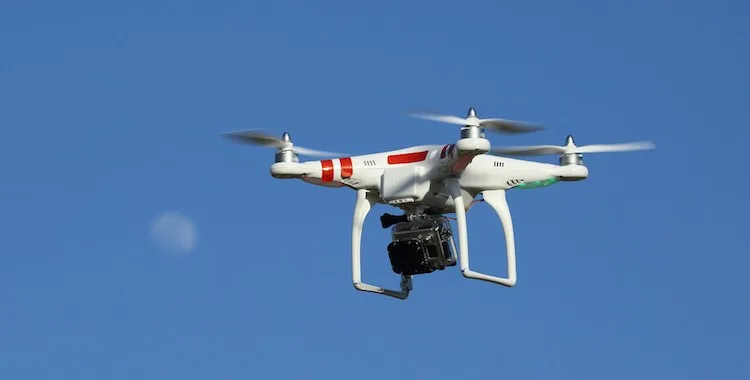Top Ecommerce News You Need to Know; Highlights from Instagram, The NRF, Amazon’s Drone Delivery Program

Happy Friday, everyone! With spring in full swing and Mother’s Day and Memorial Day around the corner, it’s likely you’re planning your marketing strategies and promotional offers to drive holiday conversions and revenue. You may have missed some of this week’s top ecommerce news; we’ll help you catch up.
Below we’ve rounded up the most relevant ecommerce news stories including Instagram’s newest push toward ecommerce dominance, the National Retail Federation’s newest multi-million dollar investment and Amazon’s drone delivery program details –– which gained FAA approval for testing this week.
Instagram Makes Another Major Stride Toward Ecommerce Advertising
Instagram, like many other social networking platforms, introduced a click-to-buy advertising solutions for brands. The cost to entry, according to digital marketing executives, is $200,000 –– a steep price in comparison to offerings on similar social sites which offer a low cost barrier, especially for small businesses.
At 4.21%, brand engagement on Instagram is the highest of any other social networks.
Of course, Instagram is a different beast than any of the other social platforms. At 4.21%, brand engagement on the platform is the highest of any other social networks. The problem, however, is that historically Instagram has served as more of a brand awareness play, rather than a sales channel. This is due to the fact that Instagram has largely remained a mobile-only experience and links included in posts have not been clickable. This means that any links included on the platform, other than the one added within a brand’s or user’s profile description, would need to be copy and pasted into a mobile browser by the user –– losing all tracking mechanisms proving that a brand’s Instagram presence was producing tangible ROI.
That all changed in March, when Instagram introduced clickable carousels that let brands post slideshows of images that end with a button for viewing additional content. This new click-to-buy offering is an additional step to appease advertisers looking to prove the conversion value on the platform.
Banana Republic has been the test subject for both of these programs.
Instagram launched its first ad in 2013 to a slew of upheaval.
“We’ve been thrilled with all the features we’ve been participating in and plan to continue using the new tools as they become available,” said Banana Republic’s head of customer experience Aimee Lapic. “A direct connection to shopping would be a great new tool that, of course, we would love to participate in, as it makes the customer experience that much easier.”
More advertising tools are currently in the works over at Instagram, according to an AdWeek article. But, Instagram is proceeding with caution, attempting to avoid upsetting its 300 million users, many of whom often cite the platform as the one place they are free from ads.
In all, advertising on Instagram has been in the works ever since the platform was acquired in 2012 by Facebook, on which 1 million small and medium size businesses already advertise. Instagram launched its first ad in 2013 to a slew of upheaval. Users took to the ad’s comment section to voice their concern:

Retail Sales in the U.S. Rose for First Time Since November 2014
Retail sales rose in March for the first time since November, according to The Commerce Department’s newest report released Tuesday. The sales increase is slightly below expectations, rising 0.9%. Lower gas costs and a break from the snow in the northern U.S. are among the factors contributing to the increase.
The retail industries driving the majority of the sales increase were automobiles, furniture, clothing, building materials and restaurants and bars. Industries outside of these five, however, saw a 0.3% increase in sales in March after dropping 0.2% in February.
Clothing purchases rose 1.2% and furniture buying increased 1.4%.
“Together with the continued buildup of cash savings from the drop in gas prices, this suggests to us that we should expect very strong retail sales numbers over the next few months,” said Ian Shepherdson, chief economist at Pantheon Macroeconomics.
Clothing purchases rose 1.2% and furniture buying increased 1.4%. Restaurant spending has edged up 0.7% in March, but it has jumped 7.7% over the past 12 months.
Overall, consumers are finally beginning to purchase big ticket items like cars, furniture and building materials, proving that the consumer mindset, and wallet, is beginning to heal after the housing bust and 2008 financial crisis — the most devastating economic downturn in 80 years.
It’s a good time to be in business.
The National Retail Federation Heavily Invests in Industry Research Center
The National Retail Federation, the world’s largest retail trade association representing discount and department stores, home goods and specialty stores, Main Street merchants, grocers, wholesalers, chain restaurants and internet retailers, is getting serious about retail data. This week, the organization announced a multi-million dollar investment in a research center aimed at analyzing industry trends.
“NRF is at the forefront of research and analysis that impact our industry, the consumers it serves and the economy in which it operates,” said NRF President and CEO Matthew Shay. “By significantly investing in the future expansion and scope of NRF research, our members will have additional tools and insight as they operate in a very dynamic marketplace. And, our advocates will have the facts they need to advance retail’s policy agenda.”
Our advocates will have the facts they need to advance retail’s policy agenda.
Shay announced that Ellen Davis will now serve as NRF’s senior vice president of research and strategic initiatives. Davis will also continue to function as executive director of the NRF Foundation.
“It is extremely exciting to be a part of building upon one of the core services we provide to our members, the media, analysts and decision makers,” Davis said. “Studies, surveys, white papers and critical analysis by industry leaders help us frame policy debates, identify trends, and change perceptions about retail’s evolution. As the nation’s largest private-sector employer and an industry that contributes $2.6 trillion dollars annually to the U.S. GDP, the retail industry impacts all sectors of our economy and is uniquely positioned to provide business insights and analysis to shape key debates in Washington.”
Retail contributes $2.6 trillion dollars annually to the U.S. GDP.
Indeed, this announcement precedes the presidential election in 2016, which is already beginning to heat up for the primaries. Small business is a bipartisan issue that remains top of mind for candidates and voters, and the NRF hopes to positively influence campaigns and decision-makers with unequivocal data supporting the retail industry’s best interests.
Amazon Drone Delivery Program Gets Green Light –– For Testing
The Federal Aviation Association has given Amazon permission to test its unmanned drone delivery program. The temporary exemption to FAA regulations for Amazon’s drone testing expires on April 30, 2017.
In a letter posted to the organization’s website, the FAA spelled out the details of the exemption. The tests have to be conducted during daylight hours, can’t exceed 100 mph or altitudes higher than 400 feet, the pilot has to keep the drone in sight at all times, an additional observer must be used, and the drone must undergo a preflight inspection prior to every test. The drone also can’t be operated within 5 nautical miles of an airport or near densely populated areas.
The temporary exemption to FAA regulations for Amazon’s drone testing expires on April 30, 2017.
In all, there are 28 regulations, many of which are strict enough to impact the successful commercial use of the drones for Prime Air. However, if Amazon can abide by the regulations and prove out the value of the program, drone delivery may soon become a more commonplace practice. The delivery industry is already in disruption with Amazon Prime instant delivery, Uber and more. No longer are customers having to wait days for a package to arrive. With this, hours is becoming more and more the norm. Drones would likely be a plausible solution for many retailers if they were popularized throughout the merchandise delivery industry.
For more ecommerce news and updates, follow us on Twitter, sign up for our newsletter or add our RSS feed to your Feedly account.
Photo: Flickr, Don McCullough

Tracey is the Director of Marketing at MarketerHire, the marketplace for fast-growth B2B and DTC brands looking for high-quality, pre-vetted freelance marketing talent. She is also the founder of Doris Sleep and was previously the Head of Marketing at Eterneva, both fast-growth DTC brands marketplaces like MarketerHire aim to help. Before that, she was the Global Editor-in-Chief at BigCommerce, where she launched the company’s first online conference (pre-pandemic, nonetheless!), wrote books on How to Sell on Amazon, and worked closely with both ecommerce entrepreneurs and executives at Fortune 1,000 companies to help them scale strategically and profitably. She is a fifth generation Texan, the granddaughter of a depression-era baby turned WWII fighter jet pilot turned self-made millionaire, and wifed up to the truest of heroes, a pediatric trauma nurse, who keeps any of Tracey’s own complaints about business, marketing, or just a seemingly lousy day in perspective.


